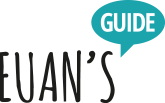Guidance for making Warm Spaces more accessible
Many disabled people, their friends, families and carers are telling us they need to be able to find out where warm banks are and what facilities are available. For example, they need to know about level access, accessible toilets, parking, public transport, hearing loops, sensory-friendly areas and more. But our community are concerned that warm spaces will be created without considering their needs.
If you’re operating a warm space this winter, here are some top tips and things to consider…
Make it easy to know you’re in the right place
Your warm space should be easy to find and easy to identify. Markings should include visual clues such as a symbol or picture as well as any words as not everyone can read and not everyone’s first language is English.
Make it easy to get in
The entrance should be easy to locate. If there is a different way in for someone who needs level access then make sure you highlight this. If a visitor needs to ‘do something’ to gain access then make sure this is explained simply, for example, “We have a ramp, please ring the bell or ring this phone number and someone will bring this out.”
Offer a warm welcome
Welcome people, ask if they have been before, tell people what is on offer and ask if there’s anything they need. Things that you might want to tell people about include where the accessible loo is, where they can sit, if there are any refreshments, if there is a kids’ toy corner, a charging point or if you have access to the internet.
Be creative with your space
Make it easy to sit and different styles of furniture can be an advantage so people can choose what suits them such as hardback chairs, lower comfy chairs and tables so that people don’t have to hold things. Make it easy to move around and if you have different areas use words and symbols to represent them such as reception, refreshments, toilets, internet etc. Some people are still shielding or taking COVID precautions so make it easy for people to social distance and offer a quiet space for people that may not want to socialise.
Be aware of extra help you can offer
If you’re able to offer supplementary things for disabled people such as a hearing loop, a ramp, a lift, large print or audio materials, make sure you know how to access them and how they work. Is there a sensory friendly or quiet area that people can use? If within your team you have members that are BSL users, Makaton users or have other particular communication skills, tell your visitors. Having a paper and a pen to hand can be helpful for people who wish to communicate with you that way. A water bowl is helpful for assistance dogs.
Accessible Toilets
This is one of the most important things you can offer – in our latest access survey, 73% of respondents said they would avoid going somewhere if they knew it did not have an accessible loo and a further 42% said that if they could not find information about accessible toilet facilities they would avoid going. Make sure you know where it is, that it is kept free of unnecessary clutter - cleaning products, hoovers and highchairs are often culprits! - and if there is a key needed then make sure your team knows where it is. Ensure that any emergency alarms are tested regularly and your team know what to do if this goes off. If the alarm is activated by a red emergency cord then make sure this is freely hanging to the floor. We provide Red Cord Cards to help you make your accessible toilet safer.
People will not expect you to have a Changing Places toilet… But if you do, please shout about it! If you don’t have one, then it can be helpful to find out where your nearest one is so you can tell your visitors.
Community
Know what else is going on in your local community. Particular services that may be useful include community transport, food banks, safe places, befriending services, advice about the cost of living and other warm banks. It can also be useful to have a list of free things to do in the area and any free events taking place.
Dignity and respect
People may need a private space for taking medications, attending to medical needs, getting something to eat, or for faith / religious reasons. Please ensure that visitors can do this with dignity. In addition, just because a conspicuously disabled person visits you, please don’t ask invasive questions, label them or ask them to wear lanyards where you wouldn’t do this to non disabled visitors. Lastly, there should be no requirement of proof for disabled people to access warm space facilities. Take it on face value, take it on trust. Disabled people are often required to prove or jump through hurdles that non disabled people simply don’t have to do.
People
Staff and volunteers can make or break the experience. Offer the same warm welcome to all your visitors. If you don’t understand something a person is saying or needs, just ask. If in doubt, don’t assume, simply ask. If, after asking, you don’t quite understand the answer, ask the question again in a different way. A regular check in with your visitors, and asking them if they have everything they need, can make people feel welcome. Also remember that disabled people may wish to help out at your venue so ensure that any work or volunteering opportunities are open to all.
Information is key
Wherever you are promoting your warm space, please talk about your disabled access. Please list your facilities on Euan’s Guide – we are a trusted source of information for disabled people and where they are already likely to be looking for information. As part of your listing, please tell people what you have got such as accessible parking bays, an accessible toilet and any other services you offer. It is also useful to know about accessible transport options nearby. Use social media to promote your warm space, it is one of the most accessible forms of communication (feel free to tag us @euansguide). Tell local businesses about your venue and make sure you tell them you’ve got disabled access.
We acknowledge that not everyone can do everything, please do what you can. Making your venue more accessible for disabled people will make it more accessible for everyone!
Looking for more Warm Spaces information?
CILIP, the library and information association, has produced a set of guidelines: ‘A Warm Welcome. Setting up a warm space in your community’ (link opens in new window) which is a best practice guidance document for setting up warm spaces in the community.
Venue Top Tips
Venue top tips




 Follow Euan's Guide on Instagram
Follow Euan's Guide on Instagram
 Follow Euan's Guide on LinkedIn
Follow Euan's Guide on LinkedIn
 Follow Euan's Guide on Facebook
Follow Euan's Guide on Facebook

